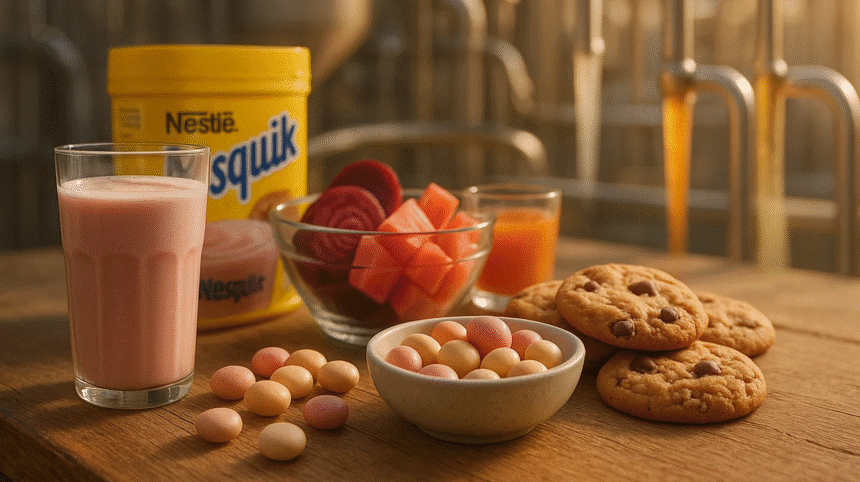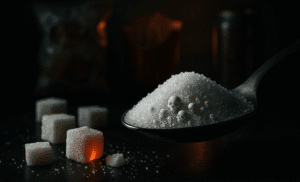In a move that could reshape what ends up on millions of plates worldwide, Nestlé has announced it will ban artificial food colors across its product lines by mid-2026. The global food giant claims that this move was initiated as a response to the growing desire from consumers for less processed, healthier foods. The move also aligns the company with a growing industry trend toward cleaner labels and more transparent ingredients. From neon-colored candies to artificially dyed snacks, many of Nestlé’s cult-favorite items will be tweaked, as the company joins a wave of brands moving away from synthetic additives.
“We are always looking for different ways to offer great tasting, compelling choices for our consumers,” said Marty Thompson, Nestlé’s U.S. CEO. “As their diverse dietary preferences and nutritional needs evolve, we evolve with them.” This announcement comes right after Kraft Heinz and General Mills made similar promises last week, pledging to gradually eliminate artificial dyes by 2027.
What Nestlé’s Legacy has to say
Nestlé’s story began in 1866, when German-born pharmacist Henri Nestlé developed a life-saving infant formula and other milk products to fight malnutrition during the times of World War I. What started as a single product evolved into the world’s largest food and beverage company, with an extensive line of well-known brands including Nesquik, Toll House, Gerber, Purina and Cheerios. But its legacy is not without any controversy. Despite its dominance in global markets and billions in annual revenue, the company has often been criticized for its role in water privatization, environmental degradation, and the marketing of ultra-processed foods. Nestlé also made a similar pledge in 2015 to remove artificial colors and flavors from U.S. products by the end of that year, but that promise was never really fulfilled. Now, with stricter scrutiny and increased consumer awareness, the company appears to be giving the effort a more serious second-chance.
The Legislative Push Against Synthetic Dyes
Food companies are coming under more and more pressure from regulators to clean up their ingredient lists. In a notable shift, Texas Governor Greg Abbott signed a measure requiring labelling for foods that include dyes or ingredients that are prohibited in the US, UK, Canada, or Australia. Starting from 2027, such labels must clearly state that these ingredients are “not recommended for human consumption” in those areas. Keeping with a broader cultural shift in the United States where clean eating and transparency are no longer just demands but rather standard expectations, California and West Virginia have also banned artificial dyes in school meals.
Synthetic Dyes are More Than Just Color
The concerns about artificial dyes did not come out of the blue. Synthetic food dyes such as Red No. 3, Red No. 40, Yellow No. 5, and Blue No. 1 are derived from petroleum and have been linked to a range of health issues all through these years. These include allergic reactions, cancer risks, and behavioral problems in children. Red 40, one of the most commonly used dyes, contains benzidine which is a known carcinogen for humans and animals. Although “safe” trace amounts are permitted under U.S. rules, many experts argue that these guidelines are out of date and fail to take repeated or prolonged exposure into account. Canadian researchers recently found that Red 40, also known as Allura Red, can impair gut function, increase inflammation, and raise the risk of inflammatory bowel diseases like Crohn’s and ulcerative colitis. In January 2025, The U.S. government prohibited the use of Red No. 3 in food products, which was already banned in cosmetics 35 years before. FDA Commissioner Marty Makary and Health and Human Services Secretary Robert F. Kennedy Jr. have been advocates for more extensive prohibitions and quicker changes regarding this matter. “We have a new epidemic of childhood diabetes, obesity, depression, and ADHD,” said Makary. “Given the growing concerns of doctors and parents about the potential role of petroleum-based food dyes, we should not be taking risks and do everything possible to safeguard the health of our children.”
Why Color Matters More Psychologically Than You Think
Beyond health risks as mentioned earlier, artificial food dyes manipulate consumer perception. Brightly colored foods are often marketed to children, which are specially designed to stimulate appetite and excitement, even if the underlying product lacks nutritional value. Studies show that color influences how people perceive taste – for example, red drinks are often thought to be sweeter than green ones, which are perceived to be sour. Sadly, this visual manipulation encourages overconsumption and builds brand loyalty at an early age. Researchers have linked such synthetic dyes with increased hyperactivity in children, resulting in ADHD. The European Union already requires warning labels such as “May have an adverse effect on activity and attention in children.” on foods containing certain dyes. However, the U.S. has been pretty slow to act in such cases.
This Time, Nestlé Says It’s Serious
Ultimately, Nestlé’s new pledge may mark a broader turning point. Unlike its 2015 attempt, this effort comes from intense pressure not just from the regulators but from consumers and parents. The company now says that most of its recipes already no longer use synthetic dyes, including Red 3, and they are “actively removing” them from remaining products like Nesquik strawberry milk and Toll House Funfetti cookie dough. However, a reformulation may not be able to serve as an eye-candy to its loyal consumers. Its signature Holiday cookies could now be missing out on the red and green chocolate chips on top, Nesquik strawberry milk would turn out to be too pale and Smarties would definitely lose its face-card. But the company has not yet said whether these changes will affect taste or whether any products will be pulled from shelves entirely.
FDA officials have encouraged brands to consider natural alternatives. “For companies currently using petroleum-based red dye, try watermelon juice or beet juice,” said Makary. “For those combining red and yellow dyes, carrot juice is a safer option.” Consumers are no longer just look at flavor or price but, they’re reading labels, understanding ingredients, and choosing the healthy option for themselves. Afterall, it’s not just about the looks, every time.

















